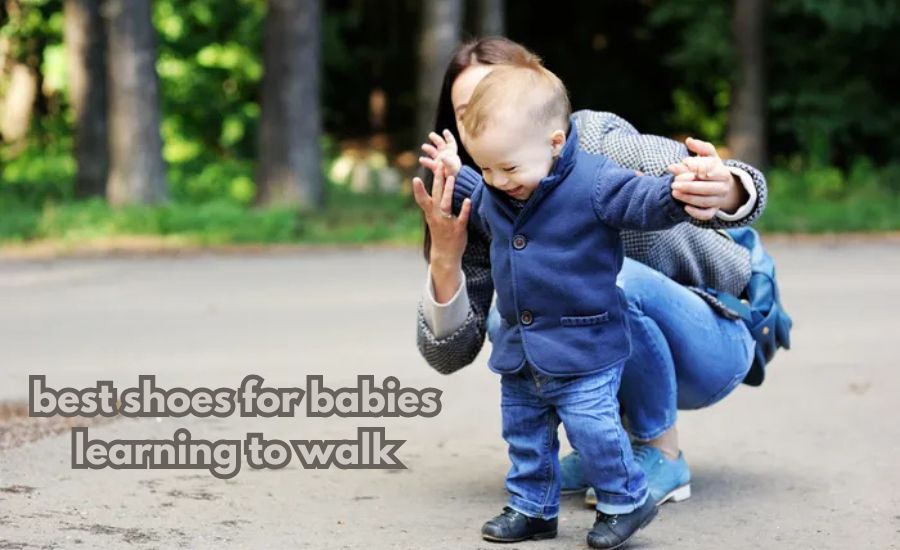Finding the best shoes for babies learning to walk is one of the most important steps in ensuring your little one’s comfort and safety. At US NOWADAYS, we understand how critical it is to choose the right footwear to support those first precious steps. With so many options available, it can be overwhelming to decide which shoes are best for your baby. That’s why we’ve analyzed the top products on the market and compiled this comprehensive guide to help you make an informed decision. Let’s explore the best options to keep your baby’s feet happy and healthy.
Why Choosing the Right Shoes for Walking Matters
When babies start to walk, their feet are still developing. Providing the right shoes ensures proper growth, balance, and comfort.
Developmental Benefits
The best shoes for babies learning to walk are designed to promote healthy foot development. Flexible soles allow for natural movement, and lightweight materials prevent strain. Poorly chosen shoes can restrict growth and lead to discomfort.
Safety First
Slip-resistant soles and supportive designs can protect your child from accidents. With the right footwear, you’ll reduce the risk of trips and falls during those wobbly first steps.
Comfort for Active Little Feet
Soft interiors and breathable materials are essential. Babies move a lot, so keeping their feet cool and blister-free makes a world of difference.
What to Look for in Baby Walking Shoes
Not all baby shoes are created equal. Knowing the key best shoes for babies learning to walk features to prioritize can simplify your shopping experience.
Flexible Soles
Shoes with flexible soles mimic barefoot walking, which is essential for building strong foot muscles. Avoid hard, rigid soles that limit movement.
Proper Fit
A snug but not tight fit ensures comfort. Shoes should best shoes for babies learning to walk allow room for the toes to wiggle but not be so loose that they slip off.
Materials Matter
Look for shoes made of breathable, high-quality materials like leather or mesh. These materials keep feet cool and reduce the risk of irritation.

Top 5 Best Shoes for Babies Learning to Walk
Here’s our curated list of the best shoes for babies in 2024. Each option has been selected for quality, comfort, and value.
Brand/Model Name
Features: Lightweight design, slip-resistant soles, and adjustable straps.
Why It’s Great: Perfect for chubby feet, offering both flexibility and durability.
[Brand/Model Name
Features: Breathable mesh, cushioned insoles, and a wide toe box.
Why It’s Great: Excellent for summer and outdoor use, keeping feet cool and supported.
Read Next: Arcyart Directory
Brand/Model Name
Features: Leather construction, anti-slip rubber sole, and padded collar.
Why It’s Great: A classic option for both style and function.
Brand/Model Name
Features: Velcro closure, arch support, and lightweight material.
Why It’s Great: Easy to put on and take off, perfect for busy parents.
Brand/Model Name
Features: Minimalist design, flexible soles, and organic materials.
Why It’s Great: Eco-friendly and promotes natural walking.

Common Mistakes to Avoid When Buying Baby Shoes
Even well-meaning parents can make best shoes for babies learning to walk mistakes. Avoid these pitfalls for the best results.
Skipping Measurements
Baby feet grow quickly. Always measure your child’s feet before purchasing new shoes to ensure a proper fit.
Choosing Style Over Function
Fashionable shoes may look cute, but they’re often less functional. Prioritize comfort and safety over appearance.
Ignoring Flexibility
Shoes that are too stiff can hinder natural movement. Always opt for shoes with soft, bendable soles.
FAQs
Q: When should my baby start wearing walking shoes?
A: Once your baby begins walking outdoors or on rough best shoes for babies learning to walk surfaces, walking shoes are necessary. Indoors, barefoot walking is best.
Q: How often should I replace baby shoes?
A: Replace them every 2-3 months or when they no longer fit properly, as baby feet grow quickly.
Q: Do walking shoes delay walking?
A: No, but overly rigid shoes can hinder natural development. Choose flexible, lightweight options.
Q: Are socks necessary with baby walking shoes?
A: Socks can prevent blisters and add extra comfort, but they’re not always required if the shoe fits well.
Conclusion:
Choosing the best shoes for babies learning to walk is essential for their growth and safety. At US NOWADAYS, we aim to provide parents with trusted guidance to make informed decisions. With the right pair of shoes, your little one will step confidently into their next big adventure.
As they grow, remember to update their shoes to match their developing needs. With this guide, you’re well-equipped to support your baby’s first steps—and every step that follows.
Explore Trending Topics on: USnow A Days.










